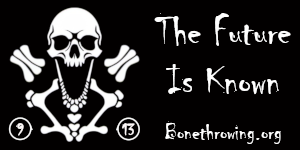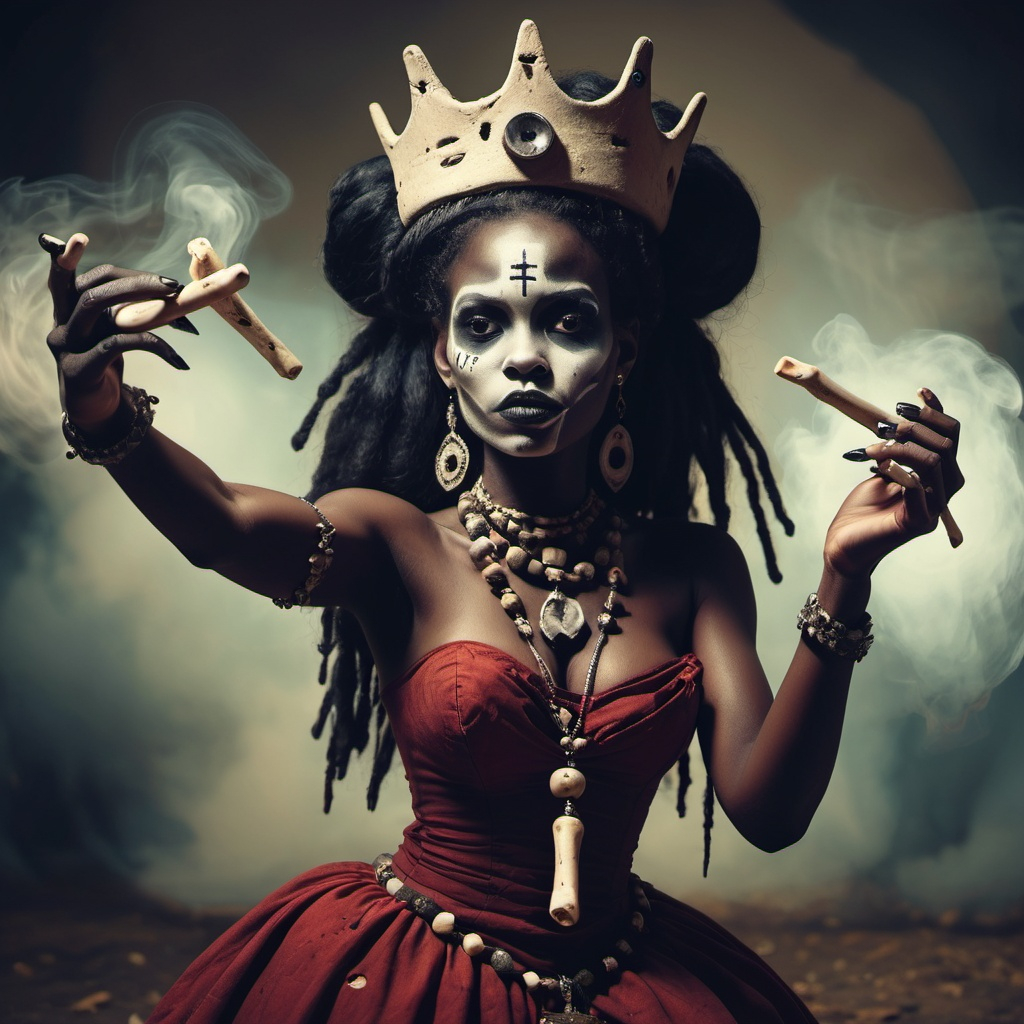So, it really depends on how much you know and have used the force in your Jedi life. There are probably countless methods to predict different types of things. You can throw bones without any type of mat or cloth, and just look at their relationships, how things are aligned or pointing towards things. This way takes a lot more practice in bone reading for the normal Jedi. So I am trying to document more direct methods to follow in these instructions, like Yes/No answers, and the Cross-road Method. You don’t even need throwing cloths or mats, just a few pennies can be used to create a cross design on any surface. A cloth or set of coins are really just creating a design where you have it divided into 4 quadrants. These quadrants can be used for a variety of questions.
The most difficult thing is probably just coming up with a standard height at which to drop the bones, if you are throwing bones on the carpet, you may need to drop the bones higher than if you were casting on a hard surface. I would also recommend starting readings with the standard set, then add the expansion set bones after some practice.
Usually, the bones are purified before a reading. This can be done in a variety of ways, such as a purifying water, a chant or prayer, or using sage smoke. I hover my bones through the sage smoke and say, let these bones be cleansed and take on the energy of the question being asked.
General Themes in Interpreting the bones
Diviners, known as bone readers or seers, interpret the patterns that emerge from the bone throw. The meaning of the throw can be influenced by the relative position of the bones, the shapes they form, or specific marks on the bones. The interpretations are highly symbolic, relying on the intuition, experience, and spiritual insight of the diviner. Each bone may represent a different aspect of life (e.g., health, relationships, finances, or destiny). Many cultures believe that the bones are imbued with the power of ancestors, spirits, or deities. The act of throwing the bones is seen as a form of communication with these spiritual forces. Some traditions involve prayers, rituals, or invocations to connect with the spiritual realm before the divination is conducted.
In bone throwing, the bones are typically cast onto a surface, like a mat, cloth, or the ground, and interpreted based on their position, orientation, and groupings. The different bones are believed to carry various meanings, and practitioners may use intuition, tradition, or symbolic knowledge to interpret the outcomes. In some cultures, additional items like cowrie shells, stones, or even coins might also be added to the set for more depth in interpretation.

General Orientation of the Bones
Straight lines: Indicates clarity, focus, clear path or straightforward outcomes.
Crossed bones: May signify obstacles, conflict, or choices to be made.
Circular or spiral formations: Could represent cycles, transformation, or repeating patterns in life.
Scattered arrangements: Often suggests confusion, chaos, unpredictability, or a lack of control.
Proximity Between Bones
Clustered or Closely grouped bones: Indicates harmony, unity, or a concentrated effort. Shows an inter-relationship between bones.
Widely spaced bones: Can symbolize separation, distance, or a need for independence.
Bones forming a barrier: Might warn of blockages or boundaries in a particular area of life.
Specific Bone Positions
Pointing bones: A bone that appears to “point” may guide attention toward a particular direction, person, or situation.
Overlapping bones: Suggests entanglement, complex relationships, or interference.
Bone lying alone: Represents isolation, a need for introspection, or an individual standing out.
Patterns or Shapes
Letters or numbers: Bones forming shapes resembling letters or numbers may be interpreted as specific clues.
Animal or human shapes: Could symbolize the presence of specific spirits, ancestors, or symbolic energies.
Additional Individual Bone Interpretations
In some traditions, particular bones have distinct roles:
Wishbone: Good fortune if curved up. It’s like a divining rod that points towards a wish, if pointing towards rib then strong desire for protection. If cupped portion is pointing towards bone then wish comes true.
Ribs: The positioning of ribs could indicate the need for emotional protection or vulnerability. Ribs facing inward, like a cup to another bone (rib<bone) may suggest a need for emotional openness, while a rib bowed towards another bone (rib>bone) those facing downward might indicate emotional blockages or walls.
Pelvic: A pelvic bone facing up may indicate stability, security, and a need to connect with one’s core sense of self. If the pelvis is out of alignment or distant from the others, it could point to a feeling of being disconnected or off balance in one’s life.
Spine: A well-aligned spine indicates strength, clarity, and balance. A misaligned or broken spine could suggest a lack of support, instability, or disruption in the seeker’s life path.
Shoulder Blade: Scapulae facing outward or upward may indicate the need to take on more responsibility, while those turned inward could suggest a need to release burdens or care for one’s emotional well-being.
Thigh The interpretation might also depend on how the bone lands: Upright: Positive outcomes, progress, or strength. Crossed or Blocked: Obstacles or challenges requiring perseverance.
Upper Arm Bone Relationship to Energy or Effort: Depending on its position and relation to other objects in the divination set, it could indicate where energy needs to be directed or where effort is being wasted.

